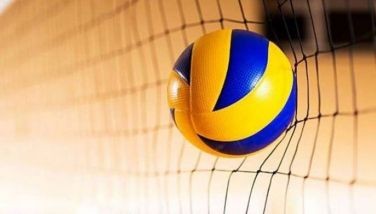The 'S' words of progress
(Part 1 of 2)
My colleagues and I who work in UP Diliman have witnessed in the last few years the construction of new physical infrastructure in the National Science Complex and the ERDT (Engineering Research and Development for Technology) complex. Funds to support this development came from the national government. While these buildings are located in UP Diliman, they are meant to become centers of excellence in science and engineering education, research and development that should benefit not only UP but also all universities, and ultimately, our country.
Recently, the Institute of Chemistry Research and Teaching Buildings in the National Science Complex were inaugurated, and on one occasion I was asked to share with the UP Chemistry alumni the academic initiatives we are undertaking in the UP System to improve the quality of learning, research, and public service in UP. How do we fulfill UP’s role as the country’s national research university, leading the country’s state universities and colleges (SUCs) and private universities; and how do we transform UP to a world-class university?
I began by introducing my “S” words. I referred to SCIENCE as my favorite “S.” More importantly, my “Ss” are Science for Service to Society. Science is one of the highest forms of human activity, requiring the use of a variety of human powers and skills of high quality, primarily of the human mind — the high ground of human existence. Science is driven by the human spirit — the passion for discovery, inquiry, innovation and creation. But it is through the continuous, cyclic interplay of empirical observation, experimental intervention, and rational thinking and design that scientists find new answers to questions and propose new solutions to problems.
Scientists possess special skills honed through many years of training and experience, involving the use of powerful instrumentation of high reliability, sensitivity and resolution, as extensions of the mind and senses. The sequential or linear scientific method, as we traditionally know it, is now practiced in a cyclic, re-iterative way — which conveys the essence of “re-search.” Scientists build on what is already known, and through a tried-and-tested process of scientific peer review, reported science is given a chance to correct and renew itself.
Science contributes to society by linking humans, nature and technology. Through science, humans build new knowledge about humans and the rest of nature and develop useful technologies to improve human life. We know human survival hinges on the survival of nature; ultimately, humans and nature are one and must live and survive together. Through science, humans are able to understand, safeguard and enhance nature.
As a life-long student of science working on marine sponges, venomous snails and biomedical projects, I have had a particular interest in biological structures and the specificity of biomolecular interactions that underlie evolutionary biology. Organisms progressed through hundreds of millions of years through “saltatory” evolution. “SALTA,” another “S,” is to leap, to progress to the next higher level. If we were to plot evolution, it would be a series of sigmoidal or S curves, an incremental shifting between stability and change, rest and activity, marked by inflection or switch points — of one state moving to the next and next higher states. (And in 3D, this succession of sigmoids would become spirals!)
Those that leaped — the best mutants, the best variants, the best products of nature, are those that self-organized and cooperated, found strength in numbers, to become sensitive and responsive to changes in their environment, quickly acquiring new traits, displaying adaptive behavior, allowing them to compete, excel and succeed, above all the rest of their kind. Clearly, ecology and biology are closely linked, with each constantly influencing and affecting the other.
Biomolecules self-organized to become cells; groups of cells evolved in complexity to become tissues, tissues to become organs and organ systems, and these to become complex organisms through hundreds of millions of years. Organisms form communities, societies and ecosystems — all these constitute our complex world today. With each new entity emerged new character, new behavior, new power.
Driving evolution at all levels, including human evolution, are the underlying physical, chemical, biological, organismic and social principles of attraction versus repulsion, inertia versus momentum, enthalpy versus entropy, organization versus disorder, statics versus dynamics, stability versus change, cooperation versus competition, altruism versus self-interest, self-destruction vs self-organization and self-perpetuation. The constant shifting and counterbalancing between these two opposing states are the S or sigmoidal curves of progress. Indeed, sigmoidicity pervades all life, even human and societal life. Business, technology, innovation and social cycles are thought to be sigmoidal.
One could thus imagine deriving useful insights from evolutionary principles and mechanisms that would help us understand and improve human life and societies, including human institutions like our university. I believe we can learn important lessons from biology, and we need the methods of science, in order to spiral up to academic excellence in UP and transform UP into a world-class university.
Going scientific and becoming organismic — both in content and in form — would be crucial for UP. No longer would we perceive change in UP as being “evolutionary” — change too slow. We would instead pursue saltatory evolution of education in UP and aspire for true intellectual mobility and ascendancy.
(To be concluded)
* * *
G. P. Padilla-Concepcion is a professor at the Marine Science Institute and an affiliate professor at the Institute of Chemistry, University of the Philippines, Diliman, Quezon City. She is a member of the National Academy of Science and Technology. She is the current vice president for academic affairs of the University of the Philippines System. E-mail her at [email protected].
- Latest





























